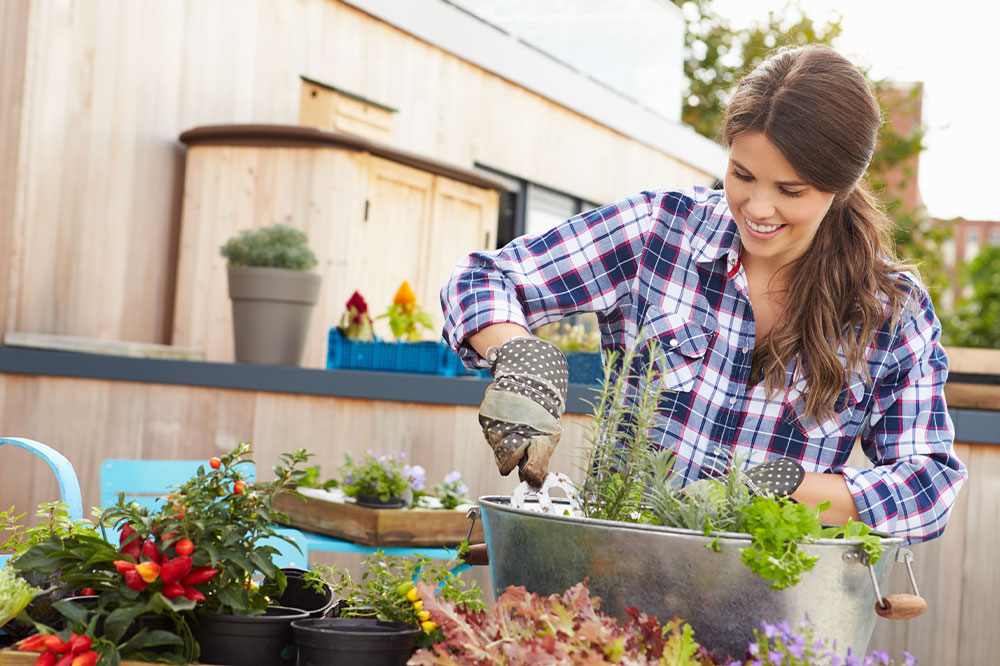
Gardening tips for beginners
Gardening might be overwhelming if you don’t know where to begin, but with the appropriate information, it can be easy. Once you get some simple gardening tips, to begin with, you can slowly build up to everything you need for your gardening journey. For example, when you shop for gardening supplies and tools, you should first decide what landscape you want to construct to choose the best pots and plants for your idea.
4 basic gardening tips for beginners
Do you want a food garden or a flower and shrub-filled outdoor living space? Is there enough light for you to produce veggies indoors or outside? Do you want to plant indoors or in a raised bed outside?
Understanding the answers to these questions can assist you in ensuring that you have the proper supplies for your job. After you have all the answers, it’s time to proceed systematically with these great gardening tips.
Pay attention to the soil type
Various plants require different types of soil. For example, edible crops such as tomatoes and cucumbers require nutrient-rich soil to sustain their enormous fruits. Flowers and shrubs, on the other hand, grow in well-drained soil with a high organic content. Examining the soil pH, nutrient content, and drainage is critical. Once you’ve determined what soil your plants require, select the appropriate pot style to guarantee proper drainage.
Buy pots that are apt for the plant
No garden is complete without some lovely pots and planters to complement the beauty of the plants. While choosing the appropriate pot for your plants, keep forms, sizes, and colors in mind. Pick an appropriate pot for its function; for example, certain soil types require bigger clay pots for improved drainage. Outdoor gardens benefit from clay pots, while interior gardens benefit from plastic or ceramic containers. When choosing pots for your garden, buy large pots to support your plants’ root systems. To guarantee regular moisture levels when growing vegetables, seek out specifically constructed self-watering containers with sealed drainage holes and saucers.
Always buy good quality seeds
If you want to start from scratch, buy good quality seeds. Seed purchasing is an exciting element of gardening since you can grow practically any plant in your garden with the appropriate seeds. Study what seed would perform best in your environment and soil to achieve maximum development and flowering outcomes.
Choose the best gardening tools
Gardening tools are vital when regularly caring for your plants; they may help you dig deeper into the dirt, rapidly eliminate weeds, conveniently transplant flowers, and get rid of pests without using chemical pesticides.
Select a gardening tool appropriate for your requirements, budget, and size. Trowels, hand forks, shears, and watering cans are the most commonly used equipment for small-scale gardening; if you want a bigger set for cutting hedges and trees, search for long-handled loppers, pole saws, and trimmers. Check that the handle design of each instrument is comfortable in your hands so that you can continue gardening without discomfort or strain. Also, ensure to pick sturdy gardening tools made of long-lasting materials to get the most out of them over time.
Some extra tips and tricks
Gardening may be a tricky affair, but many useful suggestions are available to aid you along the way! Whether you’re seeking tips on how to prune properly or which fertilizers are best suited for certain types of plants, there’s a plethora of gardening knowledge available. Additionally, don’t miss out on the following gardening tips:
There are various assortments of plants available, from edible fruits and vegetables to blooming shrubs, trees, and evergreens, and determining which ones would be good for your specific location may be difficult. Before deciding on their location in your indoor or outdoor settings, research each kind! Choose resilient species in your location and space them appropriately—for example, potted herbs require less space than fruit trees.
Certain types of plants flourish under specific circumstances, such as high humidity or low light. For instance, indoor plants require special care due to their lack of natural sunlight and air circulation, but succulents and easy-care ferns can thrive indoors.
Finally, fertilizers and plant nutrients are critical when reviving soil. All soils appreciate some extra nourishment through organic composting materials like leaf mold, blended kitchen scraps, or modern methods such as concentrated liquid feeds applied via gravity-fed drip systems, etc.
It is critical to remember that the type and amount of fertilizer required will vary depending on the soil type and the plants being cultivated. Before applying fertilizer, it is best to speak with a gardening specialist or do a soil test.




